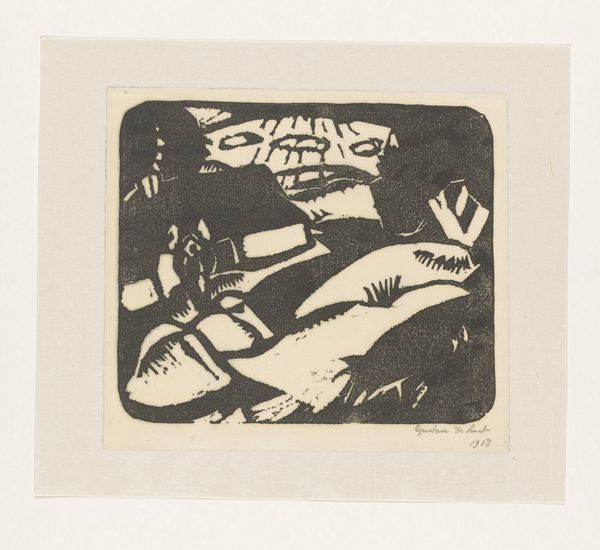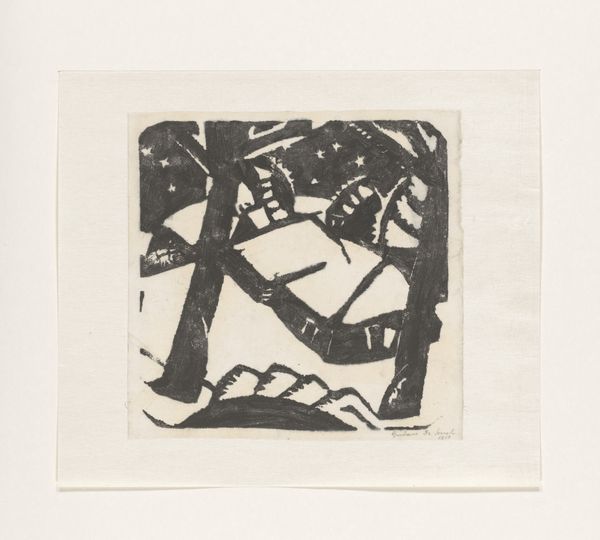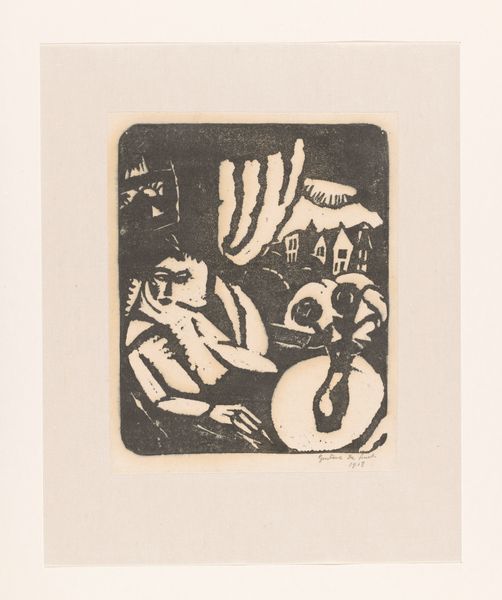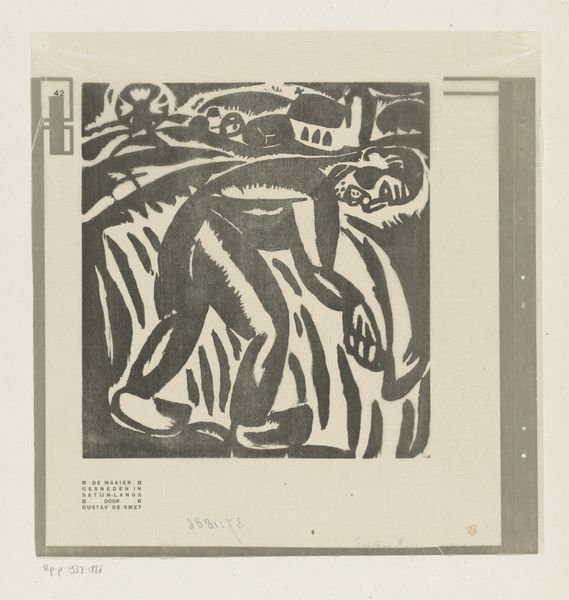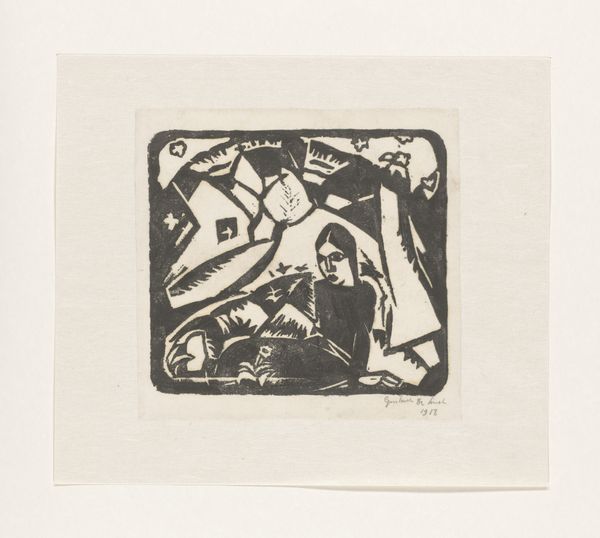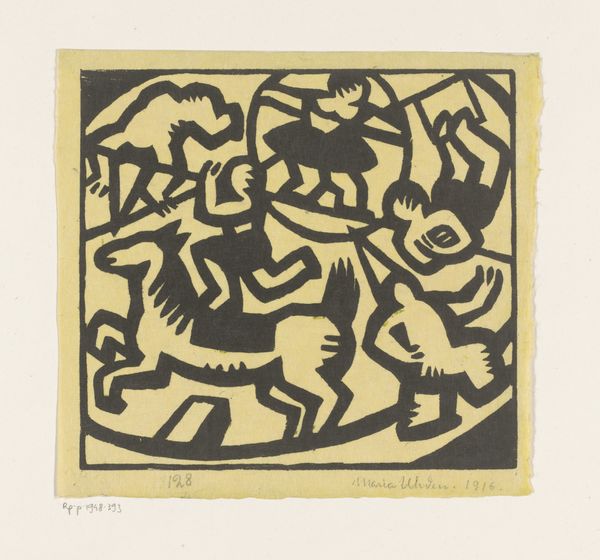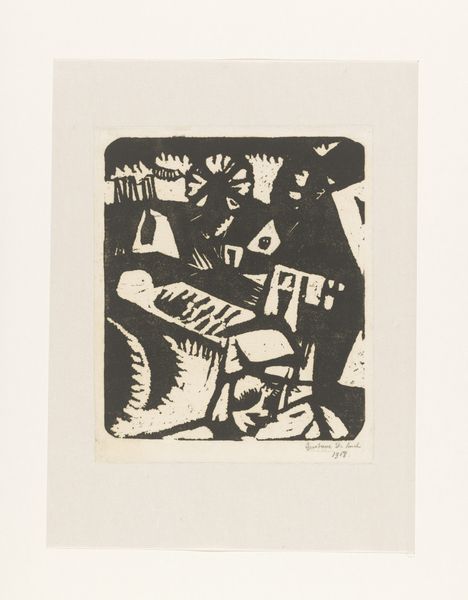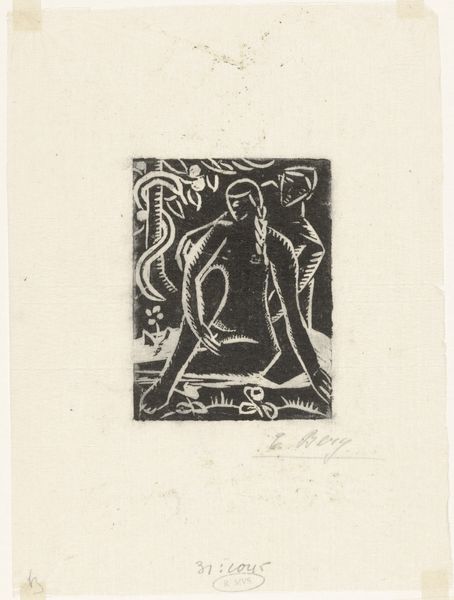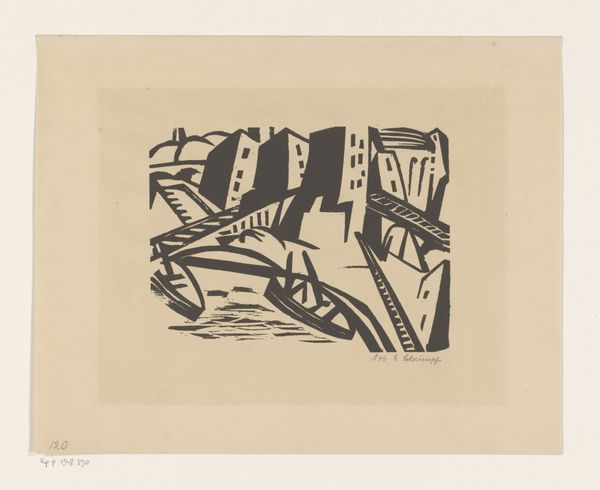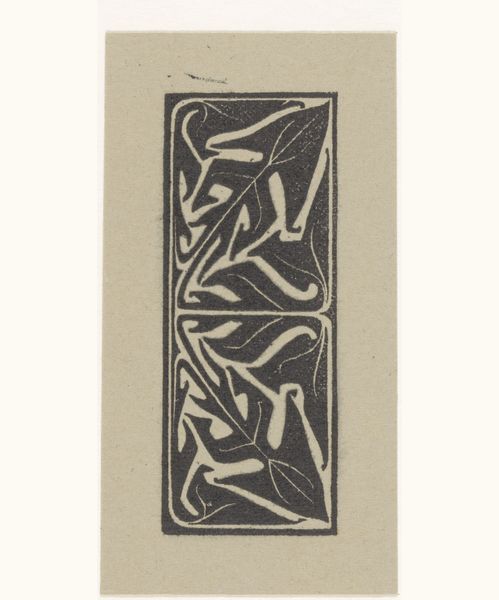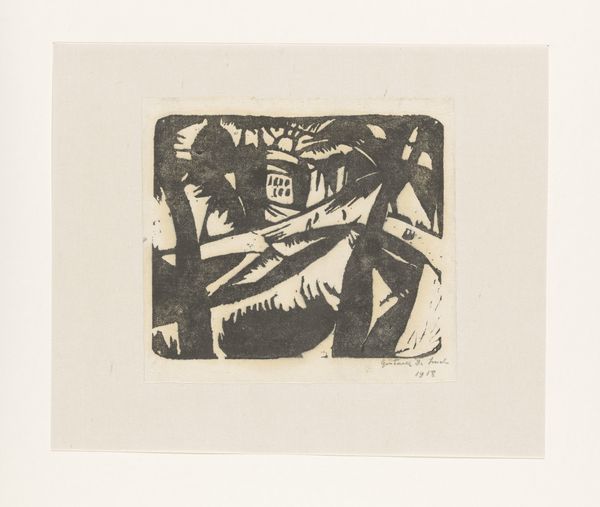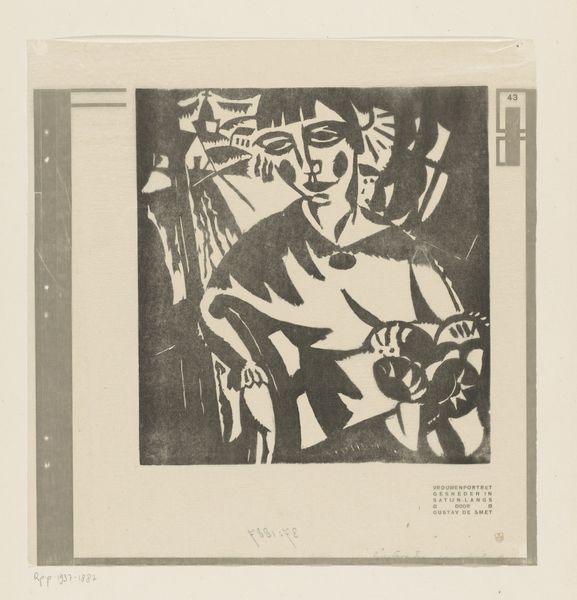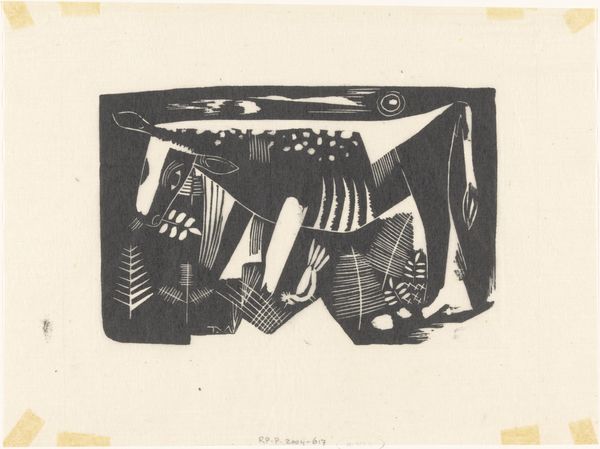
print, woodcut
#
art-nouveau
# print
#
woodcut effect
#
landscape
#
figuration
#
linocut print
#
geometric
#
expressionism
#
woodcut
#
abstraction
Dimensions: height 197 mm, width 211 mm
Copyright: Rijks Museum: Open Domain
Gustave De Smet's "Landarbeiders," probably made around 1918, uses a woodcut technique, slashing away at the surface to leave these stark contrasts. What interests me right away is how De Smet reduces everything to bold, almost brutal shapes. Look at the figure on the left, bent over with labor. See how the artist carves away the wood to define the worker's form. It’s all angles and effort, the black ink emphasizing the strain. The sun, a jagged star, feels less about warmth and more about a relentless force bearing down. It's a process of reduction, of getting to the core of the experience, the pure physical reality of working the land. I’m reminded of Paula Modersohn-Becker, who also found ways to depict rural life without sentimentality. Both artists share a desire to show, not just tell, the story of labor. Art isn't about answers, it's about wrestling with questions, and De Smet invites us to grapple with this raw, unvarnished view of life.
Comments
No comments
Be the first to comment and join the conversation on the ultimate creative platform.
